Asian Art in London
Many exhibits, discussions and talks are taking place in the heart of the British capital as part of Asian Art in London, 1-10 November. The annual celebration of Asian art has much to offer in terms of textiles.
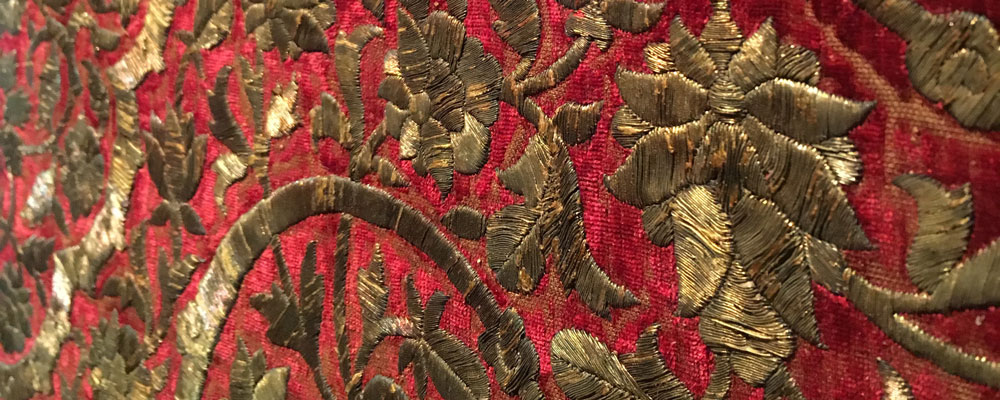
A royal canopy with cloud bands and arabesques, Golconda, Deccan, India, circa 1580, Gold and silver wire on velvet, 1.7 x 1.3 m, Prahlad Bubbar
Prahlad Bubbar‘s ‘Flowers and Geometry’ exhibition on Cork Street is rich in Indian textiles, featuring a gold and silver wire on velvet royal canopy with cloud bands and arabesques, and a painted and resist-dyed cotton tree of life chintz.

Tree of life chintz, Coromandel Coast, India, circa 1760, painted and resist-dyed cotton, Prahlad Bubbar
Textiles on display at the Eskenazi gallery on Clifford Street include two woven silk fragments from the Six Dynasties period (220-581 CE).

Two silk woven fragments, lions, elephants and camels in lattice warp-faced compound tabby, Six Dynasties period, 4th to 6th century, c. 0.41 x 0.12m and 0.10 x 0.12 m, Eskenazi
In HALI 197, the ‘Indian Textiles’ exhibition at Francesca Galloway in London is previewed. An abridged extract follows:
‘Among Galloway’s Indian textiles is a natural-coloured fine cotton niche embroidered in silk with a single flowering plant, perhaps a chrysanthemum, surrounded by a narrow scrolling floral border. Based on a 17th-century Mughal prototype such as a well-known wall hanging with a lily in the V&A, this delightful, delicate textile, more likely an architectural hanging than a prayer arch, was probably made in Gujarat for a Mughal-influenced court during the 18th century.
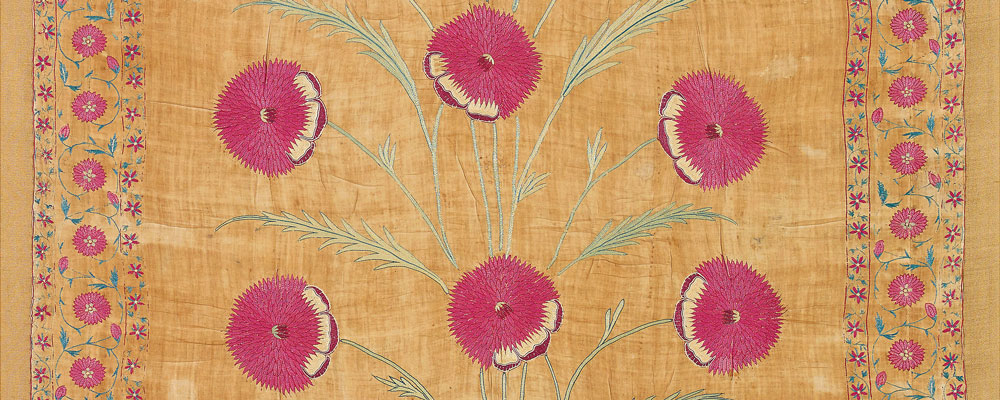
Mughal-style flowering plant in a cusped arch, possibly Gujarat, India, mid 18th century. Cotton embroidered in silk chain-stitch; 0.78 x 1.35 m (2′ 7″ x 4′ 5″), Francesca Galloway
There are also two superb, hand-drawn, densely mordant- and resist-dyed cotton cloths of a type possibly made at Masulipatnam or Burhanpur, in southeastern India during the 19th century for use in Hindu shrines in Gujarat, the Deccan or Rajasthan. The first, slightly earlier, cloth is a pieced fragment of red-ground canopy, with applied gold and silver, showing an ogival lattice, reminiscent in form to Mughal carpets, with the of medallions containing winged celestial musicians dancing around a central circle enclosing a dancing winged female figure on a green ground.
The second mordant- and resist-dyed cotton is a large, quite dark, almost square cloth that recalls a painted wooden ceiling in its decoration and colouring. It too shows a scene of celestial celebration, with large and small medallions enclosing winged dancers and musicians. The dark green ground is also filled with celestial musicians, angels and flying birds. The disposition of the motifs suggests that the textile was made to be viewed from below, like a canopy.’
Further textiles of note are at Jacqueline Simcox’s exhibition at Stoppenbach & Delestre on Ryder Street, featuring a rare kesi panel with a design of deer and birds, and other Chinese silk textiles.


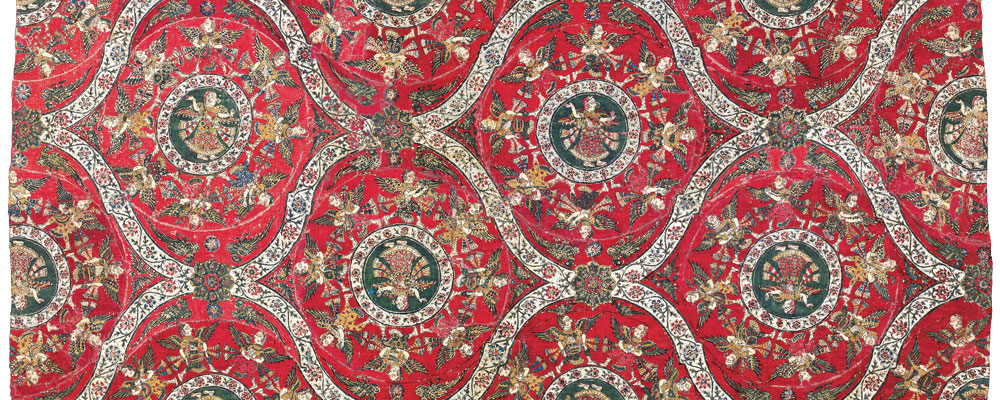
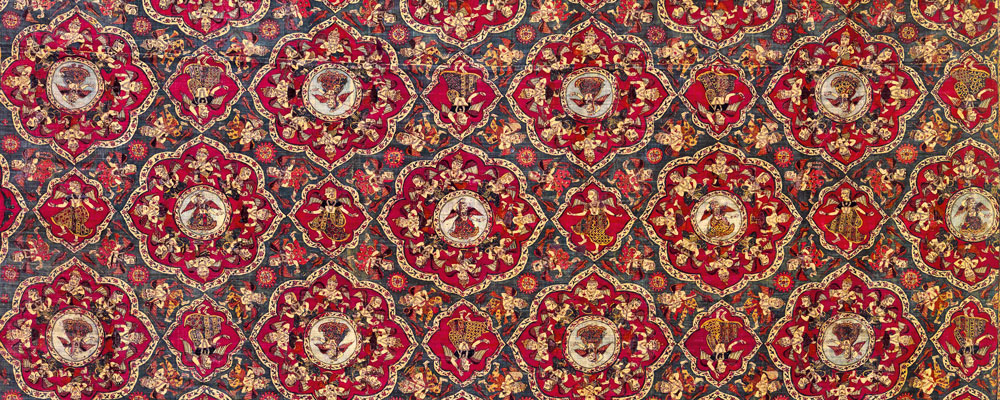
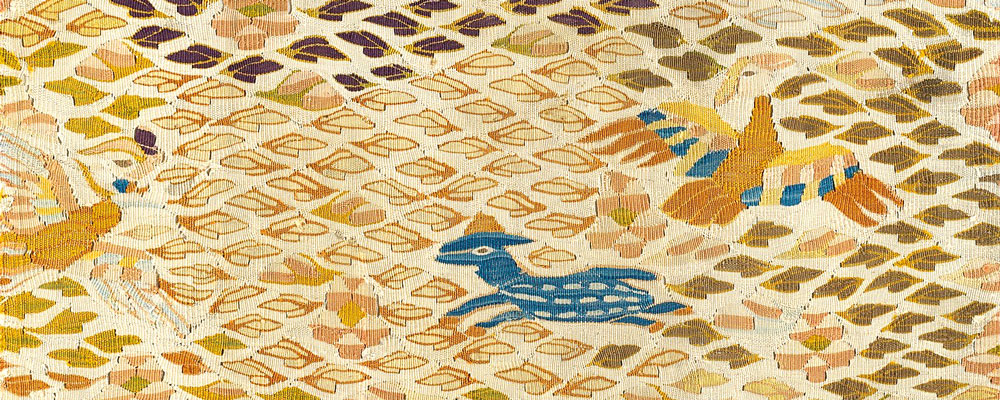

























Comments [0] Sign in to comment